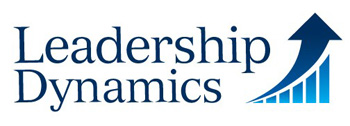7 Tips for Using Personality Tests to Hire
I thought you would enjoy an article from Inc. —
7 Tips for Using Personality Tests to Hire
Personality testing can be very useful for small businesses, where the impact of hiring the wrong worker has a disproportionate effect.
By Kay McFadden
Mar 21, 2011
Personality tests – also known as behavioral assessments and predictive tests — have come a long way since “Miracle on 34th Street.” That’s the film where a nice old man who maintains he’s Santa Claus is fired from Macy’s after flunking a dubious applicant quiz given by a self-styled shrink.
Good tests today are about more than qualifying a candidate for a slot, says Dr. Todd Harris, director of research at PI Worldwide, Wellesley Hills, Massachusetts, which has furnished testing to organizations of all sizes around the globe since 1955.
“At PI, we call it ‘seeking a multi-level match,'” says Harris. “By that, we mean you’re not just hiring someone for a job; the person needs to fit in other ways. There’s the job, there’s the fit between the individual and supervisor, there’s the company culture, and finally, there’s the surrounding community.”
But to choose the right tool and maximize its benefits, employers often must begin by broadening how they think of the process. Here are seven things to consider when deciding to use or not use personality tests.
1. Great executives aren’t great at hiring.
This research is conclusive, according to all the human resources specialists we interviewed.
“The people most confident in their abilities to predict and measure who will be successful at a given company or role actually tend to be the least good at it,” says Harris. “There’s an over-confidence with a direct correlation to lack of success, whether the business is big or small.”
Many small business owners have great confidence in their abilities because of what they’ve achieved, and deservedly so. Just be aware it doesn’t equal smart hiring. Small businesses can be further hampered by the lack of an in-house HR professional (more on that later).
So a test furnishes perspective, balance and fairness. “The data is unequivocal,” says Harris. “If you use a consistent, well-validated approach versus a gut decision, you will make better hires over the long run. This is beyond dispute.”
2. Hiring is about needs, not likes.
This may sounds like a variation on the above, but it’s actually a radical reworking of how testing can help your business.
Stephen Shapiro is the author of four books on workplace innovation. His latest work is Personality Poker, which was inspired by the premise that executives gravitate to people who think like them – and that’s a problem.
“Everyone thinking the same way creates efficiencies,” says Shapiro, who formerly led a 20,000-person innovation practice at Accenture. “But today you want innovation and growth to be competitive, and that can’t happen in a monolithic culture.”
Personality Poker contains tests and exercises designed to pull together a “full deck” of talent, using card suits – heart, diamond, spade, club – to identify different employee types. Like the newer wave of personality tests, it helps circumvent ingrained likes and dislikes.
“When you’re an entrepreneurial organization, you especially need to make sure you hire people with a broad range of styles,” says Shapiro. “So instead of weeding out people that don’t fit, the recognition today is that different roles require different characteristics.”
3. Testing can provide good ROI.
Every manager knows the cost of employee turnover is high. Still, that often had to be balanced against the costs of tests and accompanying services. In the mid-2000s, several factors emerged to make testing a viable option for small businesses.
First, tests came back into vogue after losing favor in the 1990s because they were seen as too conformist and insufficiently aware of emerging values like individuality and diversity. The new tests quantify these and other traits that make them more suited to small businesses
Second, the online world exploded. All sorts of testing choices came within easy reach of business owners. Companies such as Hire Success furnish downloadable software that enables managers to customize and administer tests and send the results to the company for evaluation at fees mostly below $500.
Third, a proliferation in online job postings – even those a company didn’t advertise – combined with the Great Recession have flooded businesses with job-seekers in recent years. The resulting uptick in equally qualified applicants necessitates more tools for sorting them out.
4. Tests still need expert assistance.
It’s clear almost any manager can give and interpret a personality test. But that doesn’t mean it’s a good idea. For starters, there are legal concerns.
The Equal Employment Opportunity Commission has issued criteria regarding the design and evaluation of testing. So has the Supreme Court in its 2009 ruling, Ricci v. DeStefano. While hiring a third party doesn’t absolve a business from liability, it underscores the necessity of using people with substantial knowledge in this area.
That doesn’t mean you have to go out and hire a VP of Human Resources. Many testing consultancies now tailor their products especially for small businesses. They’ve also scaled down fees accordingly.
PI Worldwide, for example, offers a version of its Predictive Index testing and services. A PI team of consultants will train key managers at a client firm to administer and analyze in-house for a starting fee of about $7,000, including unlimited use of a job profiling tool.
5. Tests alone are not enough.
Testing is not a magic one-stop solution, warns Annette McLaughlin, vice president of talent, coaching and outplacement for Response Co., a mid-to-senior recruitment firm in New York City.
“My perspective of bringing people on board is that there are multiple factors that can impact your performance and you need multiple steps in the hiring process to make an informed decision,” says McLaughlin.
She outlines the steps as follows: resume; application; interviews (minimum three, including initial phone interview); employment and credential verification; background check if required; reference check (minimum two); income verification; assessment tool; team meeting.
McLaughlin advises assessment, i.e., testing, occur mid-process. Others agree, since tests can yield results that reshape a job or even re-think a department. As Shapiro puts it, “The hiring process needs to consider the business process.”
6. So how do I choose a test?
This question was put to Harris, who’s an industrial psychologist. He suggested the following checklist, edited here for brevity:
a. What is the assessment designed to measure and accomplish, and how will that benefit the organization?
b. Does the assessment come with an accompanying job analysis tool that allows for the thorough identification of a job’s requirements?
c. Is the assessment free of bias with respect to the respondent’s age, gender or ethnic group?
d. Is the assessment reliable? That is, are people’s scores on it consistent and repeatable over time?
e. Is the assessment valid? That is, does it effectively predict important workplace behaviors that drive metrics such as sales, customer satisfaction and turnover?
f. Is documentation supporting questions c, d and e available in the form of a technical manual or equivalent document?
g. Is research on questions c, d and e ongoing?
h. What are the key “implementation issues” such as cost, time it takes to complete the assessment, data security, scalability across the organization, ongoing support from the vendor (does the vendor understands your business challenges), and degree of client self-sufficiency/knowledge transfer?
7. Testing starts before, during and after testing.
Once you commit to testing, assess your current staff as well as company strengths and weaknesses. That way, you’ll find a test that fits the need.
“The first step is defining the job challenge,” says Shapiro. “Einstein said if he had an hour to save the world, he’d spend 59 minutes identifying the problem and one minute saving it.”
Testing also can elevate the interviewing process – the “during” part.
“The information from these tools can be used to ask more informed questions that help you dig deeper,” says McLaughlin. She reminds managers that the same test must be administered to all candidates for the same job to be non-discriminatory.
Finally, testing should be a guidepost and not a fixed label.
“It’s important for a small business to keep in mind that both the person and more so the job and its role are not static these days,” says Harris. “They are dynamic and malleable and evolve over time. People increasingly want to put their own signature or stamp on a job. Savvy organizations allow them to do that and realize in some ways those targets they are trying to hit are moving targets.”
http://www.inc.com/guides/201103/7-tips-for-using-personlity-tests-to-hire.htm
For hiring instruments supported by Dr. Todd Harris, contact us at Leadership Dynamics, Inc. +1 925.831.9100 or email us at info@leaders-inc.com.

